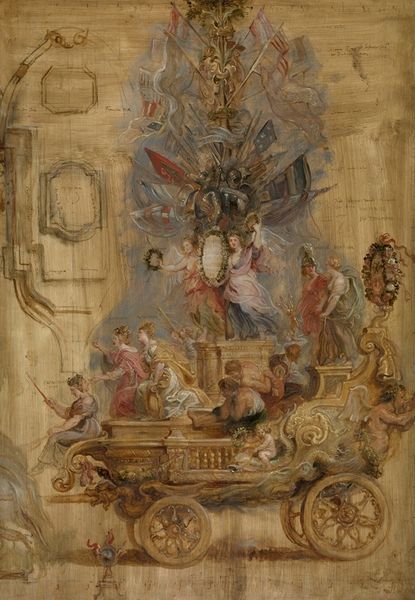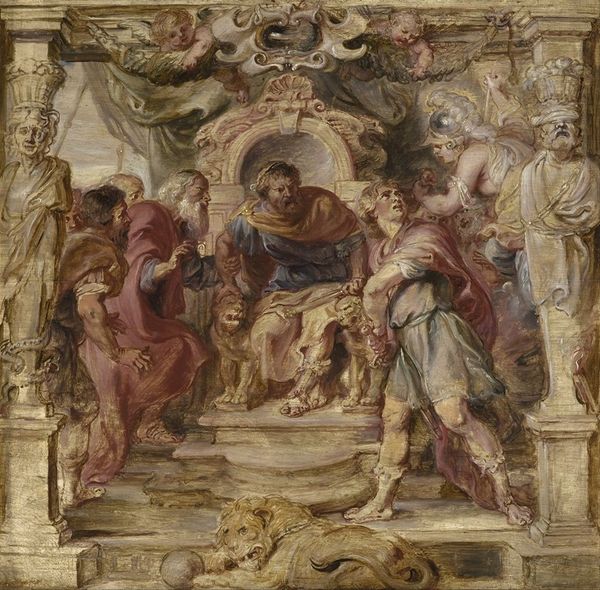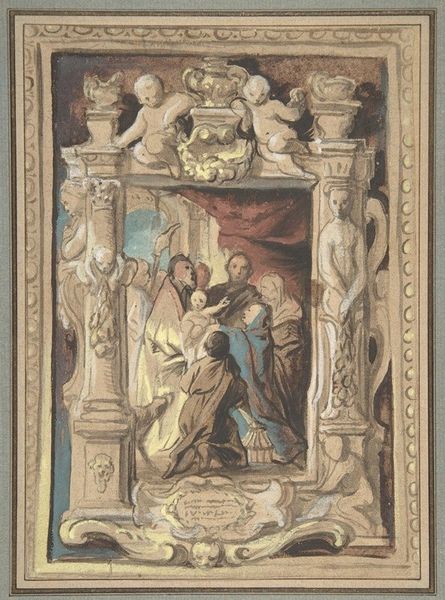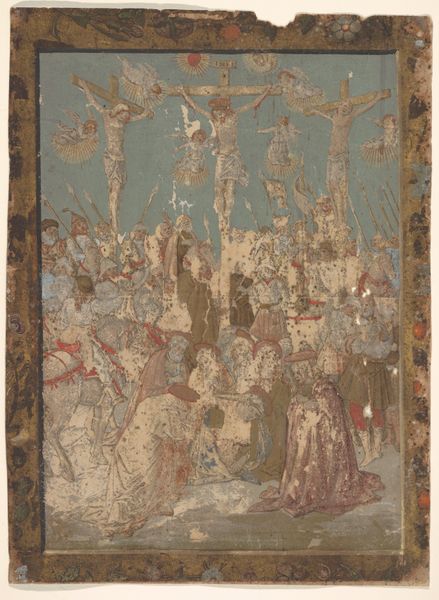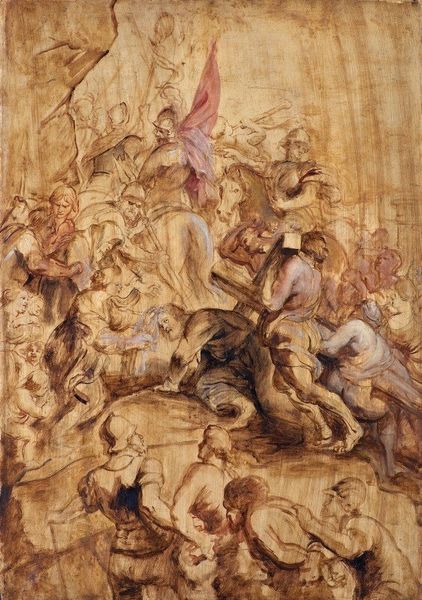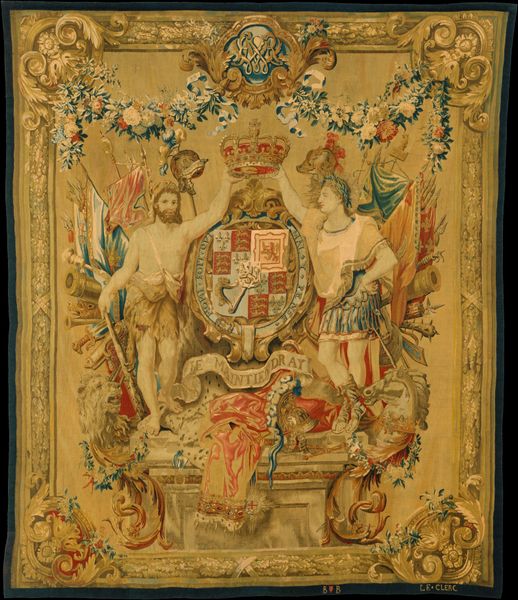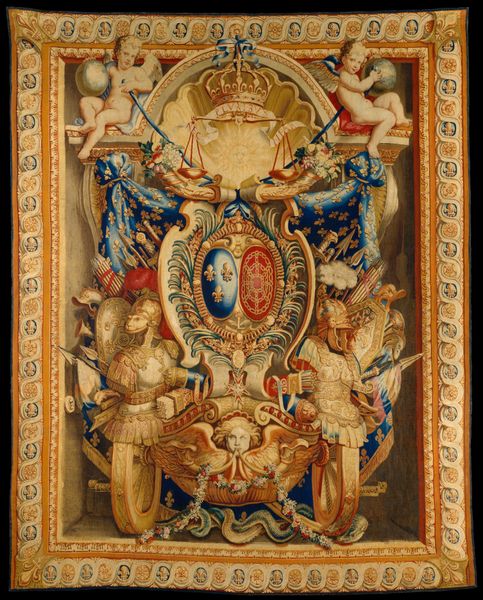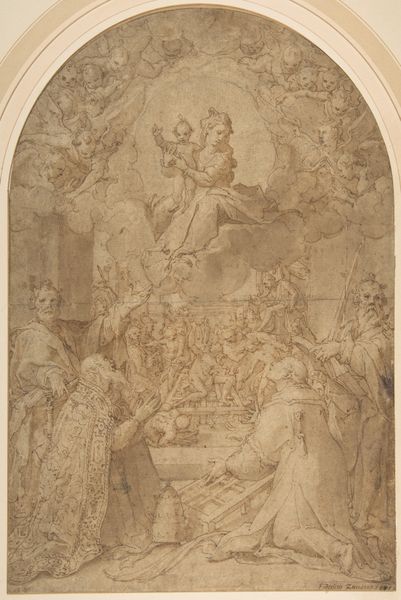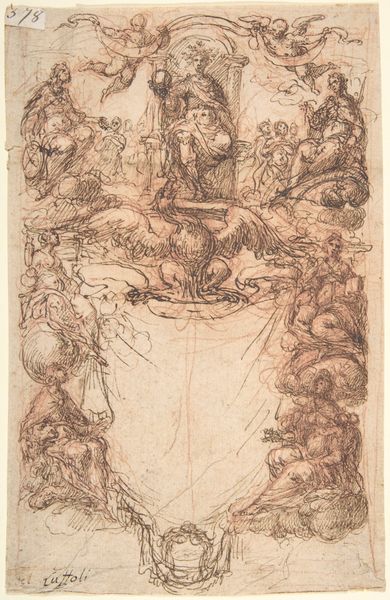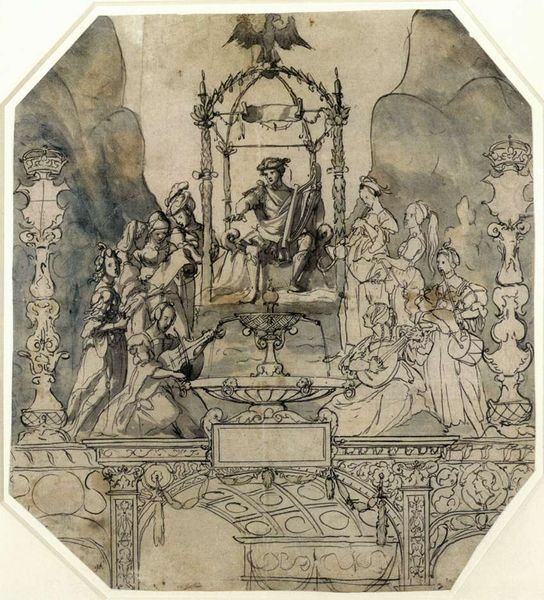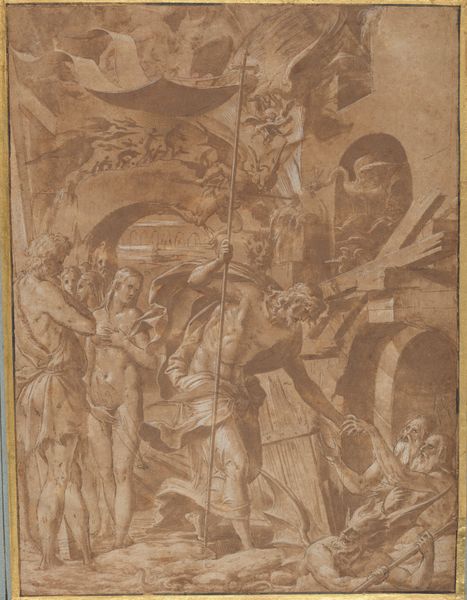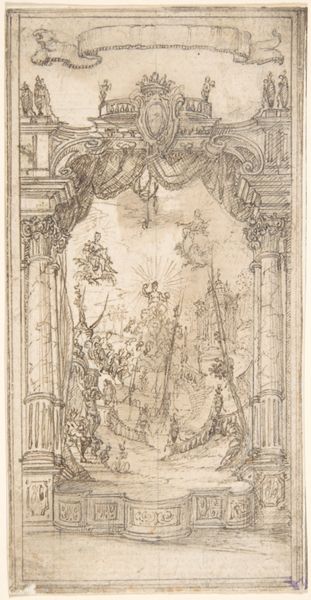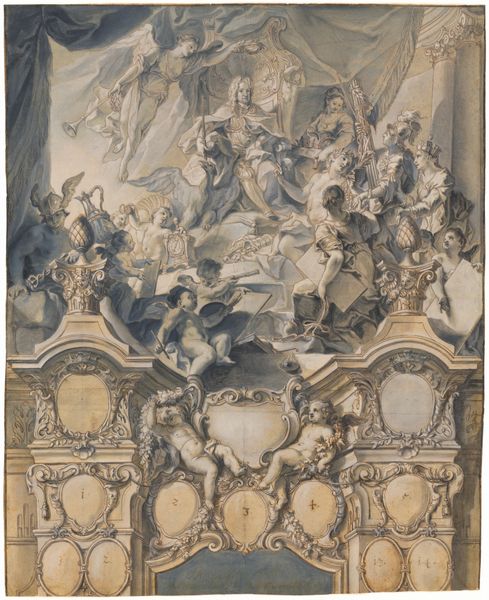
oil-paint, fresco
#
allegory
#
baroque
#
oil-paint
#
figuration
#
fresco
#
oil painting
#
mythology
#
history-painting
Copyright: Public Domain: Artvee
Peter Paul Rubens created this oil on panel sketch, "The Arch of the Mint," which teems with classical symbolism. Note the figure of Hercules wielding his club, standing atop the arch: a symbol of strength and virtue, rooted in antiquity. Hercules, a hero known for his twelve labors, is here repurposed to embody the ideals of leadership and moral fortitude. This motif recurs throughout history; consider its echoes in medieval chivalry and Renaissance humanism, each era imbuing the figure with its own set of values. The depiction also features an elaborate tree, suggesting themes of growth and prosperity. The figure of Hercules, for example, underwent numerous transformations as it was appropriated by different cultures, at times representing raw physical power, while in others, moral virtue. Such shifts reflect not only changing social values but also our collective, subconscious yearning for figures of authority and protection. These symbols, potent with inherited meanings, stir within us deep-seated emotions, engaging us in a silent dialogue across centuries. The image, therefore, is part of a continuous cycle, resurfacing in different guises across time.
Comments
No comments
Be the first to comment and join the conversation on the ultimate creative platform.
